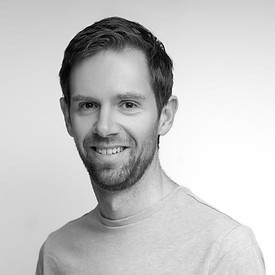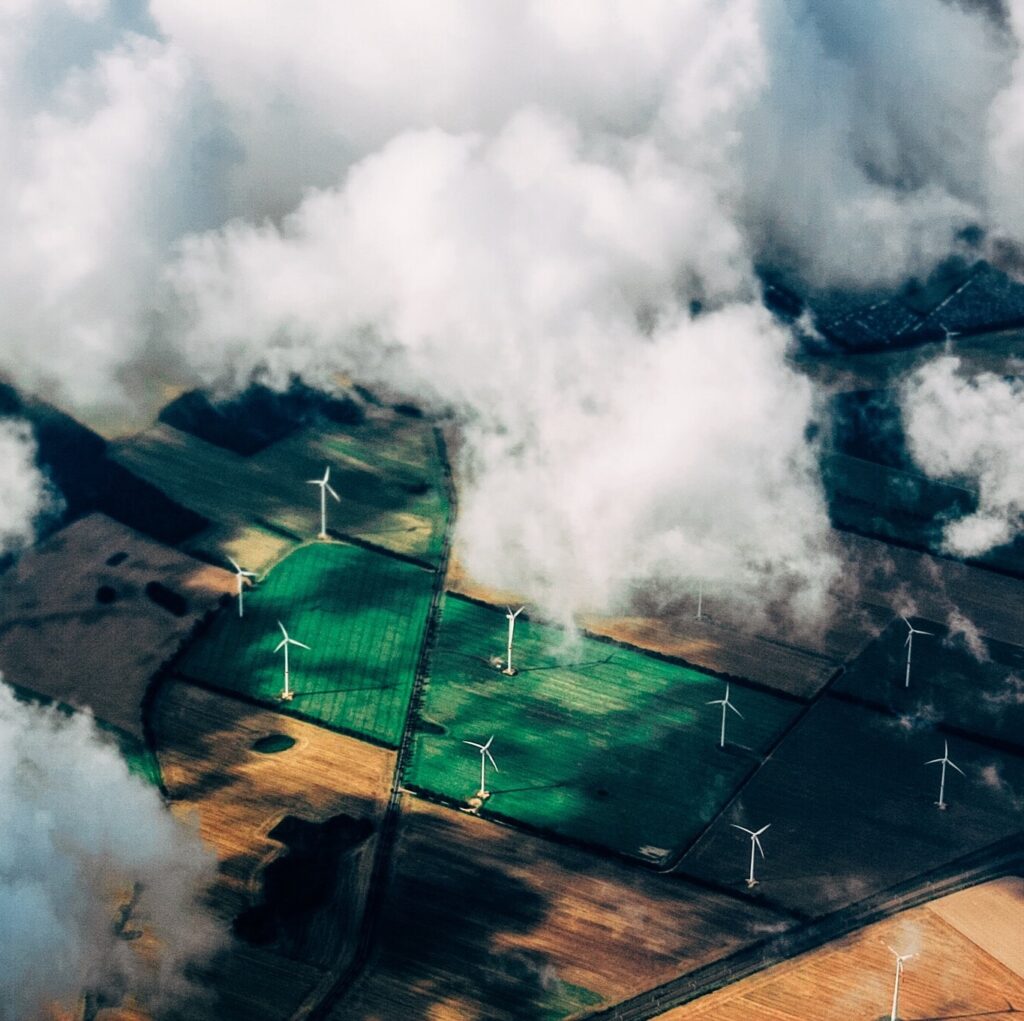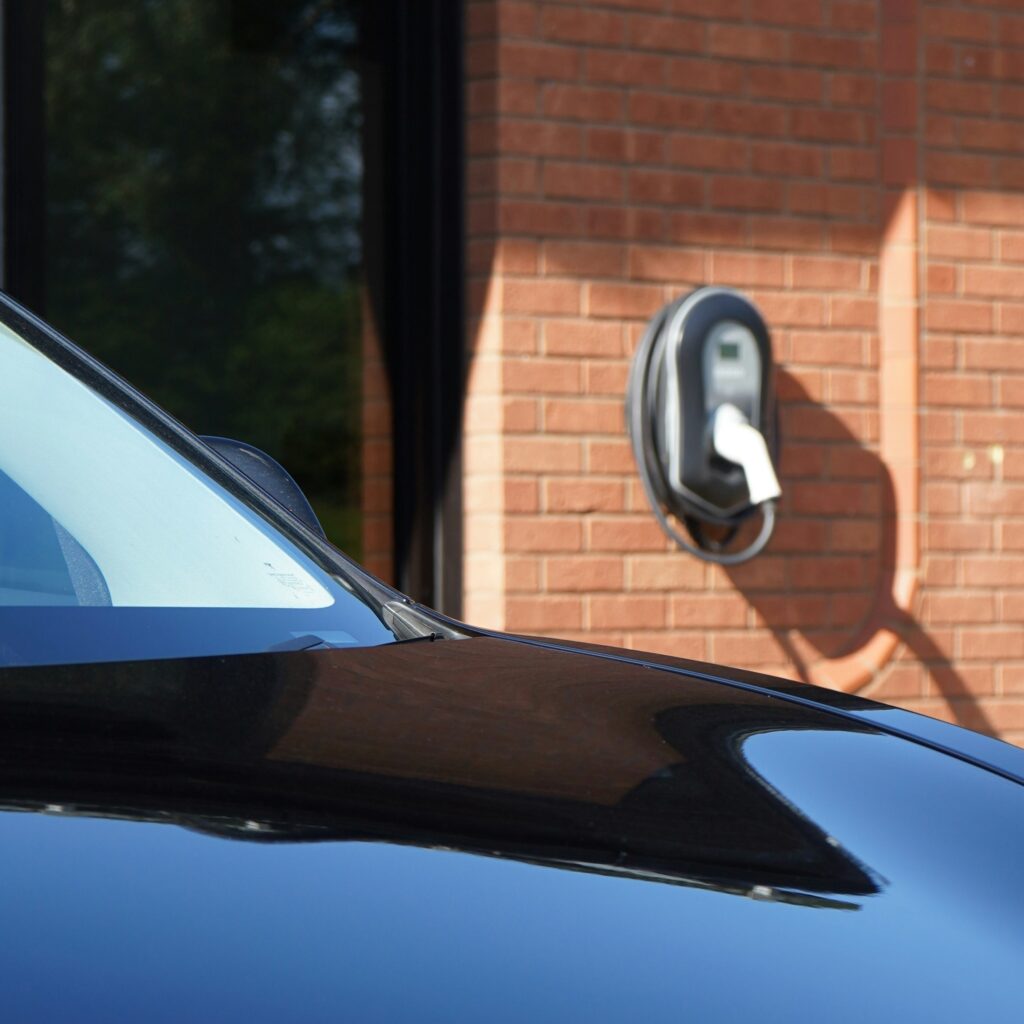Climate Now Episode 150
March 21, 2024
Charging Electric Fleets (3/3)
Featured Experts

Kianna Scott
SVP of Workforce Development, ChargerHelp!

Walter Thorn
SVP of Product and Strategy, ChargerHelp!
In this Episode
In 2023, electric vehicle drivers reported that, when pulling up to one of the more than 140,000 EV public charging stations across the United States, something went wrong about 21% of the time, leaving them unable to charge their vehicles. Such unreliability in charging availability could be crippling to what needs to be rapid growth in the EV market, and produces particular challenges to fleet operators considering EV adoption. They will be dependent on reliable EV charging to ensure their business remains operational and on schedule.
Increasing the reliability of public EV charging is a two-part problem: 1) understanding what causes charging failures in a system that is a combination of electrical hardware, computer hardware, and software, and 2) having a workforce that knows how to solve the problems. In the final episode of our series examining the fleet charging landscape in the US, we are joined by Kianna Scott and Walter Thorn of ChargerHelp!, a company that offers charger support services, and charging technician training certification programs. We will discuss why we need specialized training to develop a workforce that can service EV chargers, and what kind of servicing infrastructure will be necessary to support the expansion of a widespread and reliable national EV charging network.
Related Media:


Climate News Weekly: Nov 13, 2023
2023 Elections Recap, EV adoptions, new DAC facility breaks ground, and more
In this week’s episode of Climate News Weekly, James Lawler and Ben Hone, Climate Now’s Marketing Manager sit down with Nathaniel Stinnett, Founder & Executive Director of the Environmental Voter Project, to go over last week’s US elections and what


Climate Now: Feb 20, 2024
Charging Electric Fleets (1/3)
In the United States, nearly one quarter of national greenhouse gas emissions come from the 280 million vehicles that drive on the nations roads each year. And while fleet vehicles – including the ~5 million buses, garbage trucks, law enforcement vehicles an


Climate Now: Feb 27, 2024
Charging Electric Fleets (2/3)
Today, given route lengths and cargo capacity, it is possible to electrify 65% of medium-duty and 49% of heavy-duty trucks. Commercial fleets’ are responding to this promise, with announced commitments to electrification surpassing 140,000 vehicles in 2022 i


Climate Now: Dec 23, 2021
The sustainability conundrum of electric vehicles: Making and recycling EV batteries, with Andy Stevenson
Climate Now is kicking off our Decarbonizing Transportation series by addressing a question that looms over the electric vehicle market: how can we sustainably manufacture and recycle EV batteries? To learn about electric vehicle battery trends and challenges,


Climate Now: Feb 22, 2022
Can We Achieve 100% Electric Car Sales by 2030?
What will it take to get 100% of new car sales to be electric by 2030? Is it consumer demand? Is it political pressure? How about we just increase both? The Zero Emission Transportation Association (ZETA) is the first industry-backed coalition advocating f
Episode Transcript
James Lawler: [00:00:00] Welcome to Climate Now. I’m your host, James Lawler. My co host, Darren Hau, and I have been exploring the various ways that electric vehicle charging companies are approaching the electrification of a variety of driving fleets. We’ll continue to build on this exploration today for our third and final episode in this fleet charging series.
Darren Hau: In episode one, we cover the different types of equipment used to charge EVs and compared businesses designed to solve personal charging deficits in dense urban environments with those serving more demanding charging needs for large commercial fleets. In episode two, we discussed full service fleet charging companies and the political, financial, and technological factors they contend with.
If you haven’t heard them yet, you can find the first two episodes in the series on the Climate Now website at climatenow.com or on your favorite podcast app.
James Lawler: In this final episode, Darren and I speak with Kianna Scott and Walter Thorn. Kianna is the Senior Vice President of Workforce Development at ChargerHelp and [00:01:00] oversees funding sources along with the development and deployment of the company’s internal and external training curriculum.
Walter is the Senior Vice President of ChargerHelp’s product and strategy and leads the team that delivers and organizes the company’s various services. ChargerHelp is an EVSE, Electric Vehicle Supply Equipment Company that provides equipment maintenance and operations support to ensure smooth EV charging.
We’ll hear about technician training models and technological solutions being used to ensure EV adoption rates continue gaining traction. The company started by training electric vehicle field technicians and expanded into a subscription-based product that offers manufacturers and one-time clients as needed services to address charging station repair and reliability issues.
The company also created a technology platform called EMPWR to support the field services they offer and collect information to improve the reliability of charging assets. Since ChargerHelp’s main product is reliability as a [00:02:00] service, I wanted to get really clear on exactly how they make that happen.
Kianna Scott: I’ll definitely start with the labor force side. The workforce development side is like an, an accidental, very necessary, but accidental by product of ChargerUp. ChargerUp is at its core, a tech company. We saw the country moving towards clean tech infrastructure, EV mass adoption and of course, our CEO always says, you know, we fix charging stations because they break, but there was no operations and maintenance.
There was no, no labor force to, to be prepared for those charges when they, when they break. So she created a curriculum and because there was nobody to train, we also hired folks to train on said curriculum. But that was the necessary side. So we could be the boots on the ground, arms and legs of, I would say with the Empire app, that’s the training and labor and from its inception, if you will.
Darren Hau: Walter, do you want to add anything to that?
Walter Thorn: No, I mean, I think just to clarify the model, right, you know, all of [00:03:00] our technicians are W2 right now. And we do think that that’s, that’s very important because it takes focus and specialization to be effective at resolving the issues that these charging stations are having.
We’ve taken pride in paying a living wage, a great salary for folks that have chosen to join us on this crazy adventure and we, we greatly appreciate it. Appreciate, you know, their commitment to, to being ready to get out into the field, to go address the issues that our customers charging stations are having.
Darren Hau: Why do you think charger reliability is such a challenge?
Walter Thorn: Yeah, that’s a good question. The vast majority of the issues that charging stations face are non-electrical. So they’re, you know, electronics, they’re circuit boards that fail, there are different components that fail in some type, in some cases, it’s hardware related, you know, cables or connectors that fail and that requires a different skillset. We believe then, you know, the traditional [00:04:00] electrical background, so there definitely are electrical failures and in those cases, we do bring in electricians and we’re working on bringing electricians onto staff at ChargerHelp as well to allow us to address more of those things in house. But the genesis of that EVSE role was out of a recognition that, that many of the issues were nonelectrical.
It required a knowledge, not just of the electronics and the hardware, but also an understanding of software and the control systems and understanding the nuance of that relationship and kind of how that control system interacts with the hardware and the other kind of protocols in terms of how chargers communicate with vehicles. It’s a complex ecosystem, and so it’s not just electrical, it’s not just electronics.
Darren Hau: Is what you’re saying is that maybe some of the incumbents in the charger maintenance space perhaps are not appreciating all the different skill sets that have to be brought to bear on this?
Walter Thorn: I don’t know [00:05:00] that I would characterize it as not understanding all the different skills. I think people recognize that there are many different skills required. I think it’s more of an approach challenge and a question of specialization and, and kind of who do you call?
Kianna Scott: To add to that, to that answer, when I think about where we are with mass electrification and where the country wants to get, when we talk about net zero and depending on what you read, it could be 2030, 2040, but nonetheless, we don’t have a lot of time. And I think the urgency forces us to reevaluate our approach.
Can we even afford to let everything sit with an electrician, right? So I think it’s less about other incumbents not appreciating and more about us adding to different ways that we can approach electrification because it’s not just EV when we talk about climate, right? So that being said, if everybody has to move to this space and we have to re examine how everybody literally [00:06:00] can, when we talk about an electrician, that’s a five year journey.
When we talk about the time frame that I just mentioned, do we have enough time to allow for those cycles with just that population of people? Or can we kind of, you know, consider there’s some other skill sets at the table, there’s some other intelligences that can also move us towards electrification.
James Lawler: So Kianna, I’m really curious because the point that you’re making applies to a lot of industries that are trying to decarbonize, that are trying to electrify, they’re also approaching this challenge. How do you define the pool of people that are suitable to begin a journey with ChargerHelp to become qualified?
Kianna Scott: You know, it’s interesting, even in the short timeframe that ChargerHelp has been around, the answer has changed. So I would have said before SAE, Society of Automotive Engineering, before they got ahold of our curriculum and made it, you know, a bit more sophisticated, made it inclusive of a lot more electrical knowledge, I [00:07:00] think that applicant pool would have been like, hey, who can learn?
I mean, we have a gentleman whose top notch and he used to sell furniture. It’s not uncommon; this space for clean tech, green tech, is new anyway. Now, SAE is taking our curriculum and now on the latter end, of course, they are a certifying body so there will be an exam that people will now have to pass in order to become a certified EVSE technician. So now our curriculum is more. Then just I’m providing folks with the skills to be able to do the work, but you now have to pass a test.
James Lawler: As Kianna mentioned, the Society of Automotive Engineers International and ChargerHelp partnered to bring this training curriculum to more folks interested in becoming EV service technicians.
The partnership was born out of their common interest to ensure EV charging infrastructure is well maintained by granting certifications to highly trained clean energy professionals. We asked Kianna how much someone would know about diagnosing, reporting, and repairing different types of EV hardware issues after completing the training. Would I [00:08:00] know everything about every kind of EV charger from Tesla through EVgo?
Kianna Scott: Definitely not. I think you would know the purpose of a charging station, how it operates, how the power comes through the grid. But charging stations are very different. Even if after you pass this test, the manufacturers have their own training that folks have to go through.
So even after passing the test and again, being able to become a certified EVSC technician, there are other manufacturer trainings that if you don’t go through those, you may not be able to perform them on some of those charging stations as well.
James Lawler: I’m curious how you get leverage out of the software platform and how sort of the whole thing makes sense as a business given the whole notion of charging is that you have networks that are distributed. There’s distances between these things, and so the idea of a full time team that’s working for one company that’s going out and providing, you know, 100 percent uptime or 97 percent uptime, it would [00:09:00] seem to be very hard. So I’m just curious how you approach that.
Walter Thorn: Yeah, I mean, you’re right that it, it’s not easy, but we do look to the technology to provide us as much leverage as, as we can get.
That comes in a number of forms. We are using analytics to try to better understand problems before we send the technician. That helps us on a couple of different fronts. One of those is we can better understand the problem. We can make sure that the technician goes with the right tools, the right parts to solve that problem successfully on the first attempt.
Also, it allows us to build up knowledge repositories. So as Kianna mentioned, you know, there’s a foundational set of knowledge that technician builds and a skill set that they develop through the training that we provide to them. There’s additional skills that they develop as they work with, you know, specific manufacturers.
But to solve for some of that scaling challenges, you know, one of the [00:10:00] things that’s helpful is that we can work across manufacturers, right? So if we were only serving, serving one network, those geographic challenges would be more acute, but because we can kind of stack networks, we can build more density in a given area.
The challenge with that is that then our technicians, you know, in the morning, they might be working on one manufacture on the in the afternoon, they might be working on a totally different one. And so we try to. assist them with knowledge that we deliver through the app. So when they open up that equipment, they have guides and, and reference and resources kind of at their fingertips so they can quickly orient themselves to the equipment, to the problem. They can, you know, safely work on that equipment with the goal of, of being successful in that first visit.
James Lawler: Are you guys nationwide in terms of your coverage area?
Walter Thorn: We’re national. Our goal is to be nationwide in terms of being able to service a charging station that is anywhere, at least within the continental United States.[00:11:00]
If we look at where we have technicians today, we have them coast to coast, but they are somewhat regional in nature, just given, you know, the amount of travel that it would require. We focus on, you know, specific hubs and we have technicians in California, along the West coast, kind of well aligned right now to the zero emission vehicle States and to major metropolitan areas where there’s just a higher density of charging equipment that we can efficiently serve with the footprint that we have today.
Darren Hau: Going on the same vein, I’m curious when you look at a single technician, how many chargers can that technician support?
Walter Thorn: The reality is that it depends. Level twos are typically easier, quicker to fix. DC fast chargers are often more involved. It depends on where the chargers are installed, in some cases we see degradation due to weather. That means that the, the failure rates are sometimes higher than they might be for chargers [00:12:00] that are indoors.
It depends on whether they’re public or fleet. The amount of utilization that those chargers are seeing. And then lastly, it depends on how quickly we need to be there. Our resource models depend on the SLAs that we’re providing to our customers. And so we need to provide a certain level of availability if we want to support a one or a two-day SLA versus if we have a five day SLA or a seven day SLA.
Darren Hau: Yeah, that’s fascinating.
James Lawler: A note for our listeners, an SLA is a service level agreement that a service provider like ChargerHelp prepares for a client or buyer. SLAs outline energy use expectations to ensure that quality service is delivered to customers.
ChargerHelp uses their app, EMPWR, to track SLA factors like quantity, reliability, and price of electricity throughout the delivery process to improve transparency, improve safety, and meet SLA targets. As these service agreements become more common and EV charging infrastructure grows, I’m left wondering what the EV landscape will look like.
Kianna Scott: Folks are coming from [00:13:00] all walks of life. The federal government is dispersing a lot of funds, you saw the climate bill. It’s a ton of money and organizations are signing up their clients or their customer base to be trained and it’s a great thing. It’s a great thing. What I, what I do think needs to happen in tandem is an awareness, at least, of the infrastructure and the rate at which it is expanding or not.
And I say that to say because folks are signed up to get trained, right? And they are learning a new skill, but if the infrastructure is not ready to receive this new skill by way of a new career, then that is a skill that can lie dormant until the infrastructure kind of catches up.
Darren Hau: Kianna, you just hit on something that’s interesting. ChargerHelp is not just training its own technicians, you’re training other people as well. Can you dive one layer deeper and describe how that training process works? What, what is the methodology? What is the process like for bringing [00:14:00] in new folks from multiple fields that may not have experienced with chargers before?
Kianna Scott: So when it comes to the training in and of itself, before it was five modules, we would spend like a day per module. Those first two though, are now heavily steeped in electric fundamentals and electrical safety and codes. So we are saying that we should spend a little bit more time with that for the person where the information may just be new. We also spend a week on safety then we also do a capstone. We allow folks to be able to apply some of the content, some of the information that they’ve learned in a controlled setting.
So I’d say it’s about three and a half to four weeks. Um, and depending on, you know, we work with organizations and their time that could stretch or shorten the amount of time, um, in terms of the weeks that we, that we spend on the curriculum.
Darren Hau: How much of that is like virtual or book learning versus like hands on, here’s a charger, let’s [00:15:00] look at it, et cetera.
Kianna Scott: Um, right now our training model has been, uh, mostly hybrid, mostly the safety part we can do in a virtual interface. When it comes to the learning, it’s a very technical job, right? So you have to allow for tactile learning opportunities. You have to allow for folks to be able to touch, see, um, a real charging station. We want to set people up for success in passing the test and the test will have our requirements around a visual display of mastery.
James Lawler: Shifting gears a bit. Can you describe folks on the receiving end of EVSC service? So who’s the customer base of the company?
Walter Thorn: Yeah, I’m happy to start. We have a lot of variety in who those customers are today. Everywhere from public utilities who own and operate charging stations as part of they’re offering, I guess, to the rate payers in their areas. So they, they provide charging equipment in areas that they serve.
We work with organizations [00:16:00] that do school bus electrification and have trading equipment for electric school buses. Private organizations, so starting to work with on the fleet side, and organizations that have their own charging infrastructure to support an electric fleet that they own and operate. So it really does vary, but the core of it is our customers are folks that own and operate charging equipment and are looking for a partner that can come in and help them achieve high reliability outcomes that we will work with whatever charging equipment, whatever software that they’re using and come in and be a partner to them and to their other vendors to help achieve high performance outcomes.
Darren Hau: So how do you address different priorities and levels of sophistication between different customers?
Walter Thorn: The variation that we see is probably just around level of urgency, you know, for fleet and private, it’s often emission critical. And so [00:17:00] they’re willing to invest more in faster SLAs, things like spare parts, other things that we see as being necessary for faster time to repair.
Obviously, uptime is, is the north star metric that I think everybody’s going to. On the public charging side, we also look at charging success rates. So that has a significant implication on driver experience. So we don’t want them to have to try three or four times before they have a successful charge, we want them to be able to plug in and charge successfully on their first attempt. You know, we measure our, our service effectiveness in terms of like mean time to repair. And so, we’re looking at the different factors that help us and help our customers achieve fast and rapid resolution times.
Darren Hau: And since that this is such a multifaceted fragmented industry, right, every charger has their own training program, are you working with charger manufacturers to incorporate your feedback and how they do product design?
Walter Thorn: We partner with those [00:18:00] manufacturers, often it, it does start with the training relationship because they help train up our technicians so that they can work on their specific equipment. And often it’s also allowing, not just allowing us to work effectively, but being certified by them or approved by them so that we can work under the equipment’s warranty.
But then we do have those relationships where we do have things that we’re seeing in the field and patterns that we’re observing, you know, not only within a given customer’s installed base, but in some cases across, you know, multiple customers who share equipment vendors, and so we do work with those manufacturers to provide that feedback on things that we’re seeing and how they can make design decisions that improve, you know, serviceability is obviously key for us, but then, you know, overall reliability as well.
James Lawler: I was wondering if there is any competition between what you’re trying to do and the charger manufacturers, would they ever seek to try to maintain their chargers?
Walter Thorn: Some manufacturers offer extended [00:19:00] warranties that include labor. And so, in those cases, we may compete with them. Some manufacturers only offer warranties that include parts. And so, in, in those cases, we kind of are a complement to that parts only warranty.
What we see with our customers, the reason that they often come to ChargerHelp is that we are more comprehensive in our approach than what a manufacturer may offer in their warranty. So, we’re hardware and software agnostic. We don’t really care where the problem is, we are motivated to help resolve it and so there’s less kind of finger pointing and less saying, well, that’s not my problem because it’s not a hardware problem. When they come to us we care about the equipment working successfully and so there’s, I think, good incentive alignment between us and our customers are around that.
James Lawler: If you were to change one thing, does it make it easier for you to accomplish the goals you [00:20:00] have within Charger Health? What would that be?
Walter Thorn: If I had a magic wand, I would love for the industry to be more collaborative. I think we’re quite fragmented as an industry and I have observed challenges because people are trying to kind of protect their turf and, you know, in an industry like this, that’s growing so quickly, I would love for there to be more of an orientation towards collective success versus individual organizational success, and so that collaboration is something that I would love to see more of.
James Lawler: Where do you not see enough of it? If I may ask.
Walter Thorn: I think you see instance of it at many different levels. I think data sharing is one of the ones that maybe we’re the most interested in seeing more collaboration around. It’s like charger data sharing and making it just more efficient for different organizations to be able to plug in and understand what’s going on and interact with the triggers.
James Lawler: Yeah.
Darren Hau: Yeah. I guess just speaking as the customer perspective [00:21:00] here, I would just strongly second that. t the end of the day, you just need the chargers to work, and it’d be great if more folks in the industry had this, like, let’s get it done, let’s fix it and let’s communicate and learn together because the pie is growing so much, you might slow your growth down if you don’t do that.
James Lawler: You’re not going to recommend it to your cousin, who’s wondering if they should buy an EV if you had problems with these charging systems, right? Kianna, what about you?
Kianna Scott: You know, ChargerHelp is a business, of course, which means we have to be concerned about our bottom line. We need to be, want to be, we will be a successful revenue generating entity, right? And when we talk about business in it, at, at its core, um, outside of context, a lot of times collaboration and revenue are competing aims. You don’t really have a lot of collaboration when you’re trying to generate revenue. You want to be best in class one and only, and I want to get there first because I want to make the money, but we’re talking about the climate. We’re talking about [00:22:00] decarbonization. We’re talking about mass electrification, which just undoubtedly necessarily includes an requires a collaborative energy, if you will, more than energy application, if you will, and I don’t see that as much.
I think you see the business goals, the isolated pain points of the business entity in it of itself. I’m not saying that’s a bad thing. I’m just saying, when we talk about the purpose and the mission behind the organization and the business next to the revenue, it is to help our world. And that I think requires us to reconsider how we approach business outside of the general you know, orthodox way that folks normally do.
James Lawler: Makes sense. Well, Walter, Kianna, thank you both for your time. Learned a lot today.
Darren Hau: I’m glad we got to dive a few layers deeper on some topics as well, so thanks for the time.
Kianna Scott: Thank you for having us.[00:23:00]
James Lawler: That’s a wrap on our fleet electrification series. I’d like to thank Nathan, Rob, Arcady, Anthony, Jonathan, Kianna, and Walter for joining Darren and me on this series. To hear it from the beginning or to explore previous podcast episodes, visit climatenow.com. We’d love for you to get in touch with us and let us know how you think we’re doing. Feel free to email us at contact@climatenow.com. We hope you’ll join us next week for our next conversation.